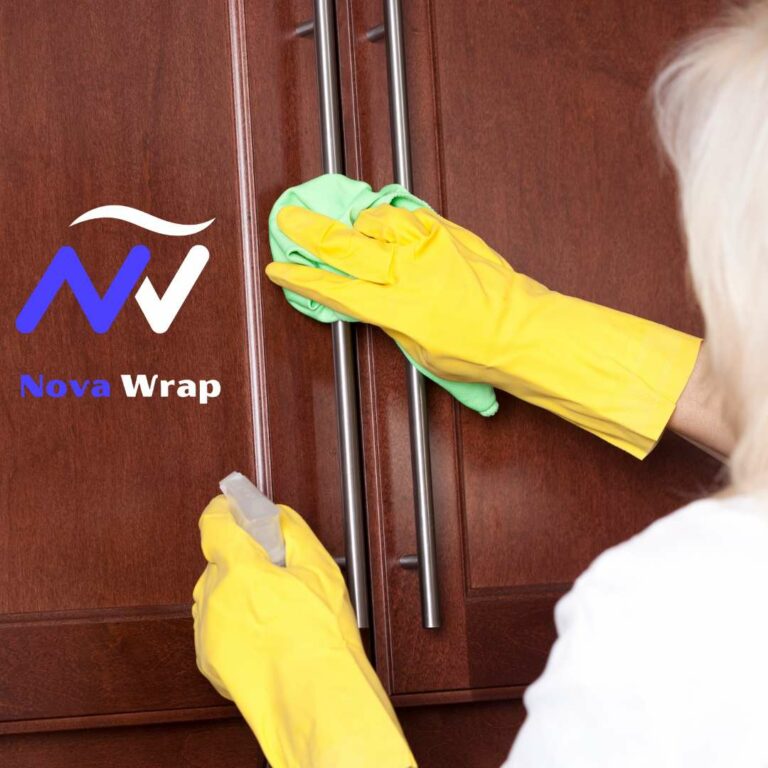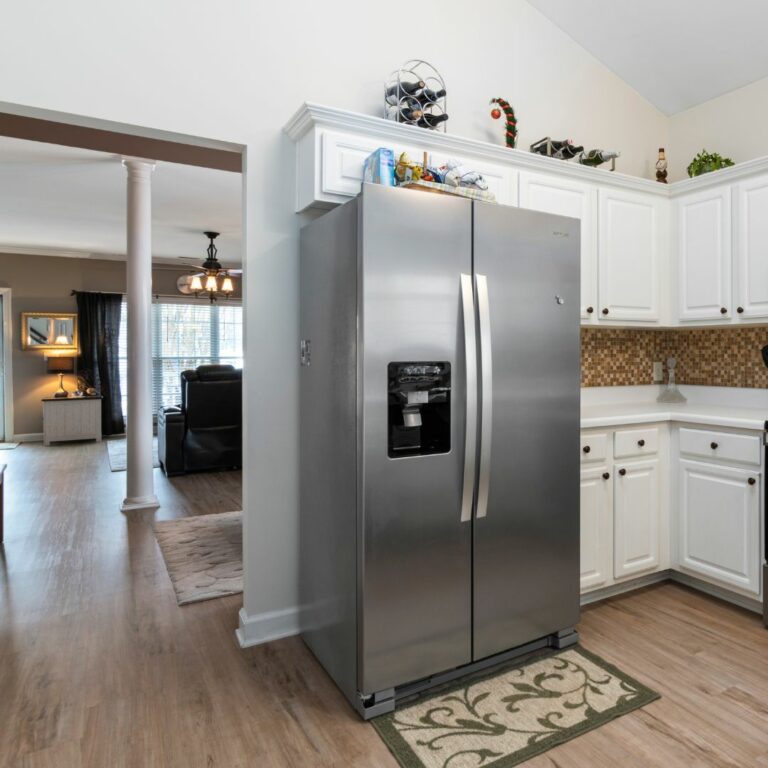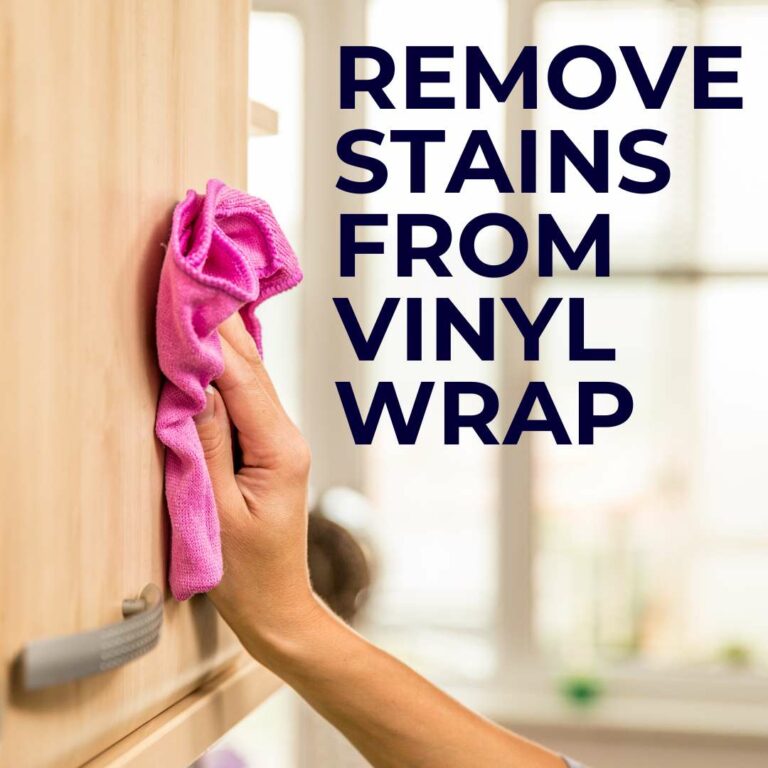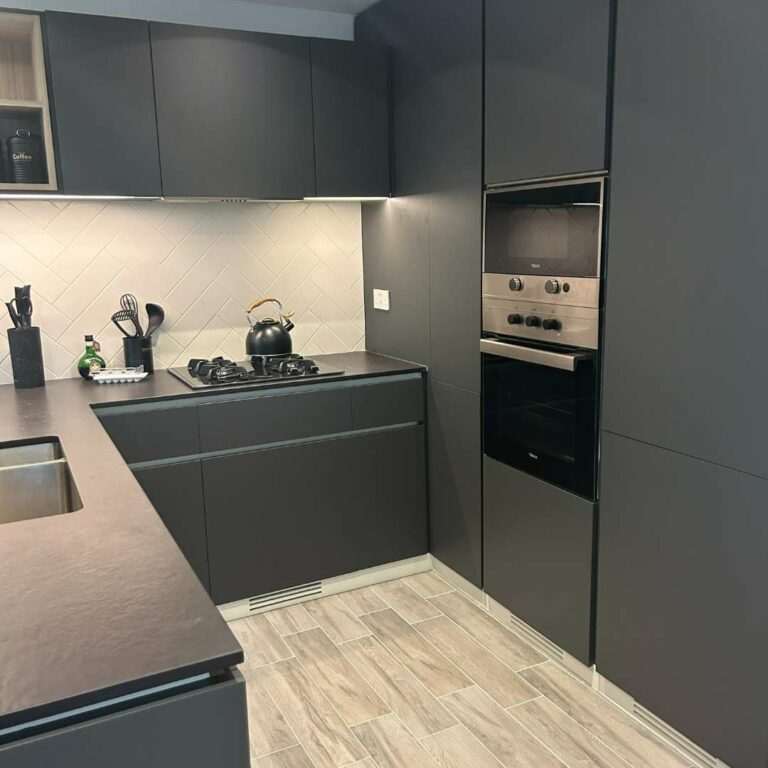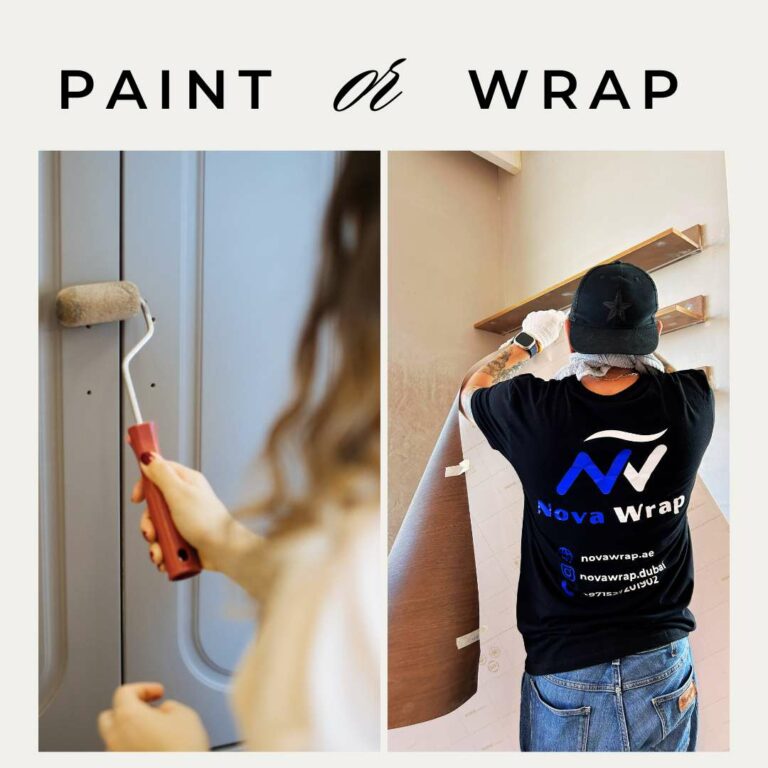If you decided to renovate your kitchen with vinyl wrapping there could be a few reasons you’re looking to remove it.
Here in Dubai, it’s very common that rental tenants are not happy with the look of the old traditional wooden doors found in most apartments. Vinyl wrapping is a great cost effective way to temporarily change the look of a kitchen while offering the ability to remove the vinyl when moving out of the apartment.
Another common reason for removing vinyl wrap is because it was never installed properly in the first place. There’s a lot of companies that will offer cheaper prices at the cost of quality. If your vinyl wrapped doors are peeling, it’s most likely because the initial installation was done in a rushed, careless way.
Lastly, you might want to remove the vinyl to simply change the look of your home. This is one of the many great benefits of vinyl wrapping.
What is Vinyl Wrap and Why is it Used on Kitchen Doors?
Vinyl wrap is a versatile material used in kitchen, bathroom, bedroom, and commercial renovations. It offers a cost-effective way to transform the look of your cabinets and found It’s popularity from its durability and the variety of finishes it offers.
While vinyl wrap can last for a long time, it’s important to note that it is a way to temporarily change the look of your kitchen without a permanent and costly renovation. However, if the film is not installed properly the film may begin to peel, which may be the reason why you’re looking to remove it. If that’s the case, follow the below steps to remove vinyl film from your doors.
Speak To Our Team
If you’re interested in interior vinyl wrapping in Dubai, we’ve got your project under wraps!
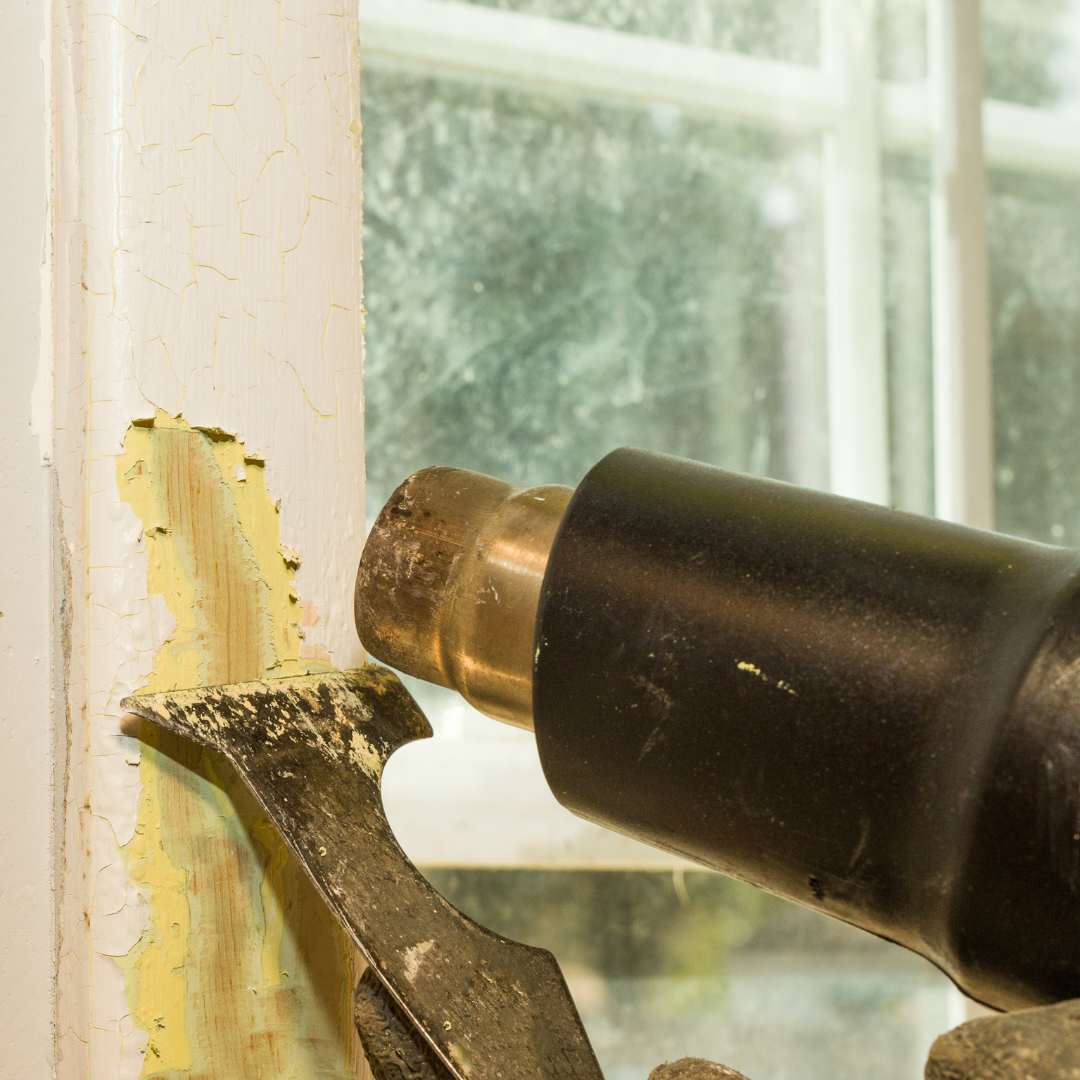
Preparation for Removal of Vinyl Wrap
Before you start, gather the necessary tools:
Steps to Remove Vinyl Wrap from Kitchen Doors
Step 1: Begin with Heating the Vinyl
Step 2: Peel the Wrap
Step 3: Clean the Residue
Speak To Our Team
We’ve got you covered!

Tips for Effective Heating and Peeling
Dealing with Adhesive Residue
Test your cleaning solvent on a small area first to ensure it doesn’t damage the door. Here are some products that work well;
Rubbing Alcohol (Isopropyl Alcohol): Rubbing alcohol is a household item that can effectively remove adhesive residues. It’s less oily than some other options, making it a good choice for kitchen surfaces.
White Vinegar and Water Solution: A more natural and eco-friendly option, a mixture of white vinegar and water can be effective, especially on less stubborn residues.
Baking Soda Paste: For a DIY solution, you can make a paste of baking soda and water. This gentle abrasive can help lift adhesive residues without scratching surfaces.
Citrus-Based Cleaners: These are natural and have a pleasant smell. They are effective in breaking down adhesive residues and are usually gentle on surfaces.
Risks and Precautions DIY Vinyl Wrap Removal
Attempting this task yourself can lead to damaged doors or stubborn residue. It’s important to assess whether you’re comfortable with these risks or if a professional’s help is needed. If you’re based in Dubai, Abu Dhabi, Sharjah, or other nearby emirates, our skilled team of professionals are happy to help you.
Aftercare Alternatives to Removing Vinyl Wrap
If removal seems daunting, consider painting over the vinyl wrap as an alternative. Ensure the surface is clean and primed for the best results.
How To Remove Vinyl Wrap Without a Heat Gun
A hair dryer set to hot can make the vinyl film easier to remove. Pay special attention to peeling the vinyl wrap using the following method; To remove vinyl wrap without a heat gun, you can use a simple alternative method. Start by gently peeling a corner or edge of the vinyl with your fingers or a plastic scraper. Once you have a small section lifted, carefully pull it back at a 45-degree angle while applying consistent, even pressure. Continue this process, making sure not to rush or force the vinyl off to avoid damaging the underlying surface. It may require patience, but with a steady hand and gradual peeling, you can successfully remove the vinyl wrap without the need for a heat gun.

